A few weeks back I was thinking in writing finally some post about general theory for spaces with arbitrary dimension. It soon dawned on me that the first post should be about the impossibility of solving X^2 = -1 on spaces of odd dimension for both the complex and the circular method of mulitplication on those spaces. So post number one should be about the fact the famous number i does not exist in spaces with dimensions 1, 3, 5 etc.
And what about the second post? Well you can always factorize the determinant inside such spaces, that is a very interesting observation because the determinant is also the product of all eigenvalues. These eigenvalues live traditionally in the complex plane and as such a naive math professor could easily think that the determinant can only be factorized inside the complex plane. So that would be a reasonable post number two.
Since all these years I only did such a factorization once I decided to do it again and that is this post. The basic idea is very simple: If you want to find an expression for the inverse of a general 3D circular number, you need the determinant of that number. From that you can easily find a factorization of the determinant. It’s as simple as efficient.
But now I have repeated it in the space of 3D circular numbers I discovered that part of this factorization behaves very interesting when you restrict yourself to the subset of all 3D circular number that are not invertible. That is that taking the conjugate ‘determinant style’. The weird result is that taking this kind of a conjugate increases the number of eigenvalues that are zero. So this form of conjugation transports circular numbers with only one eigenvalue zero to the sub-space of numbers with two eigenvalues zero.
For years I have been avoiding writing general theory because I considered it better to take one space at a time and look at the details on just that one space. May be that still is the best way to go because now I have this new transporting detail for only what would be the second post of a general theory, it looks like it is very hard to prove such a thing in a general setting.
Luckily the math content of this post is not deep in the sense if you know how to find the inverse of a square matrix, you understand fast what is going on at the surface. But what happens at the level of non-invertibles is mind blowing: What the hell is going on there and is it possible to catch that into some form of general theory?
I tried to keep it short but all in all it grew to a nice patch of math that is 8 pictures long. Here is the stuff:

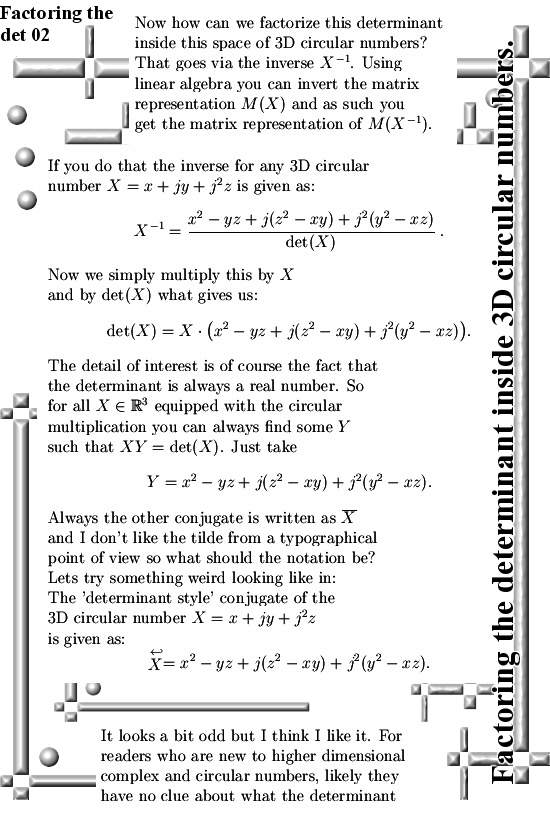
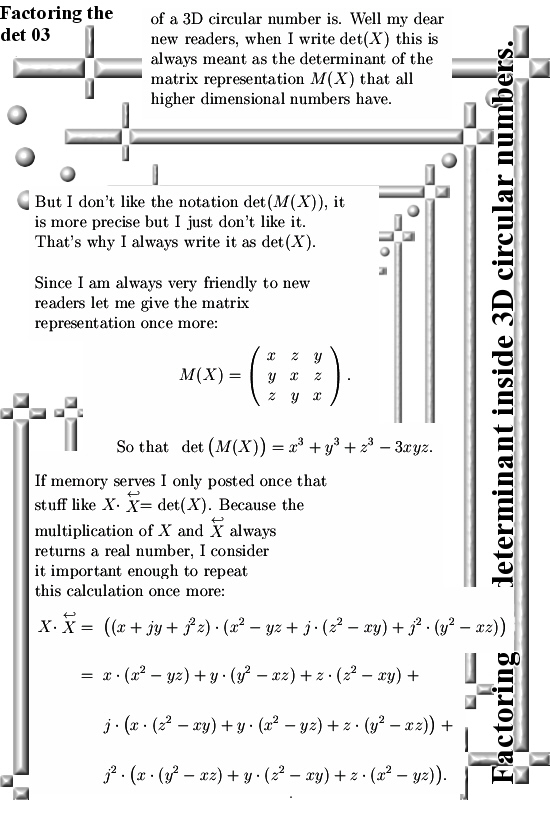
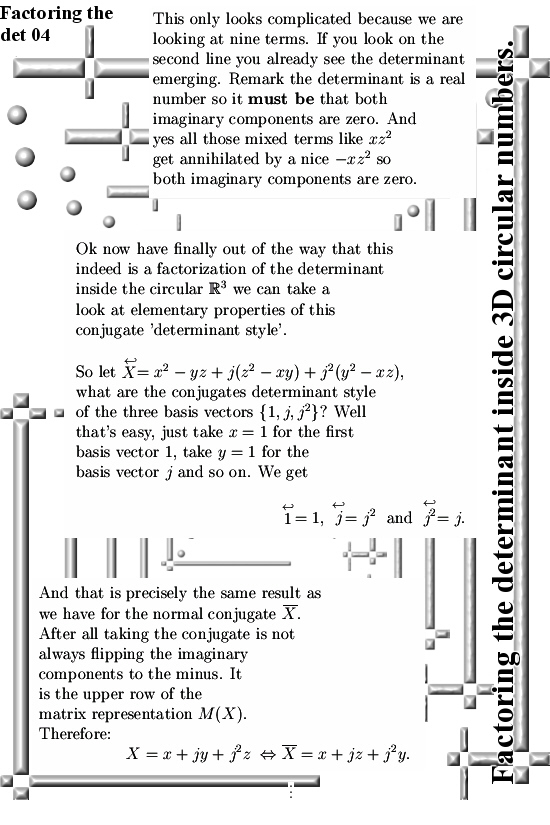

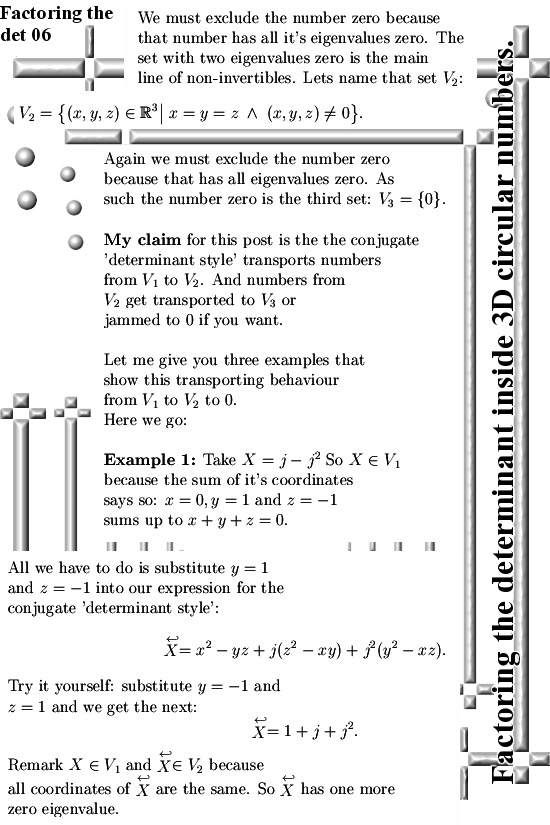
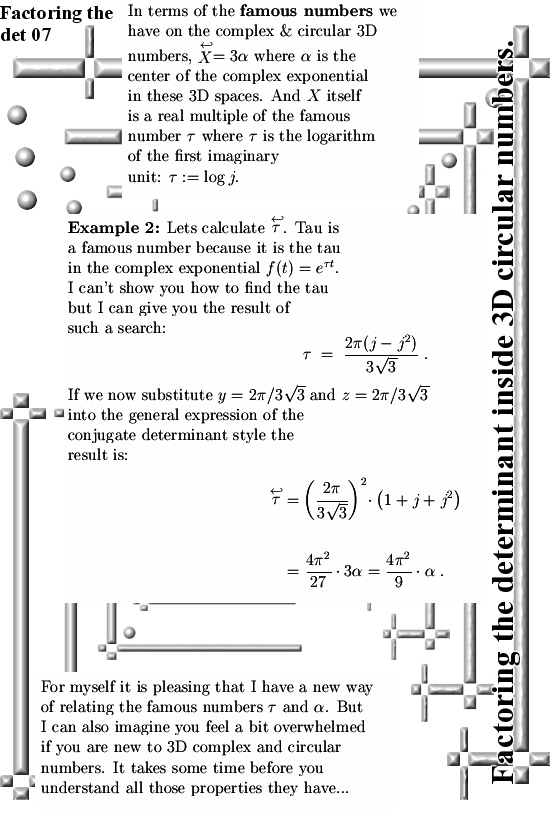

At the end of this post I want to remark that the quadratic behaviour of our conjugate ‘determinant style’ is caused by the fact it was done on a 3D space. If for example you are looking at 17 dimensional number, complex or circular, this method of taking a conjugate is a 16 degree beast in 17 variables. how to prove all non-invertible numbers get transported to more and more eigenvalues zero?
May be it is better to skip the whole idea of crafting a general theory once more and only look at the beautiful specifics of the individual spaces under consideration.
End of this post and thanks for your attention.